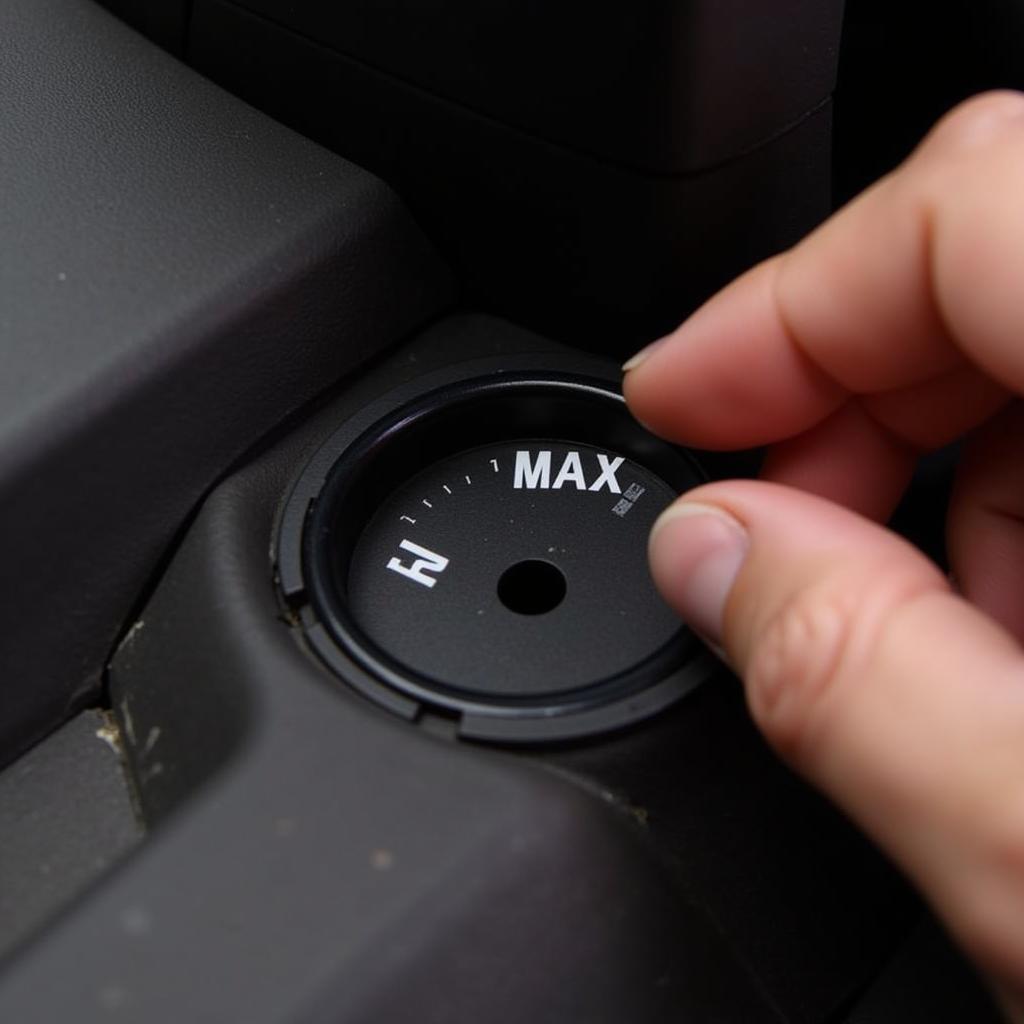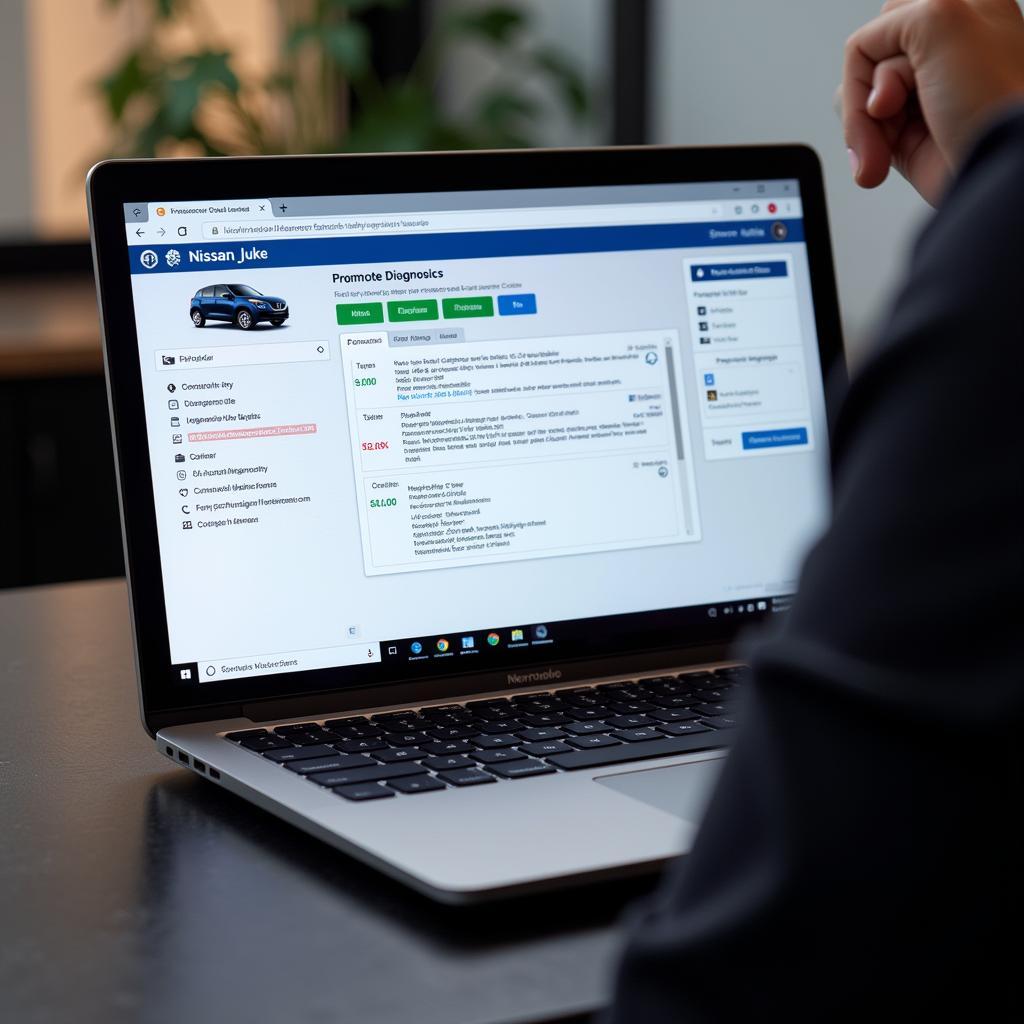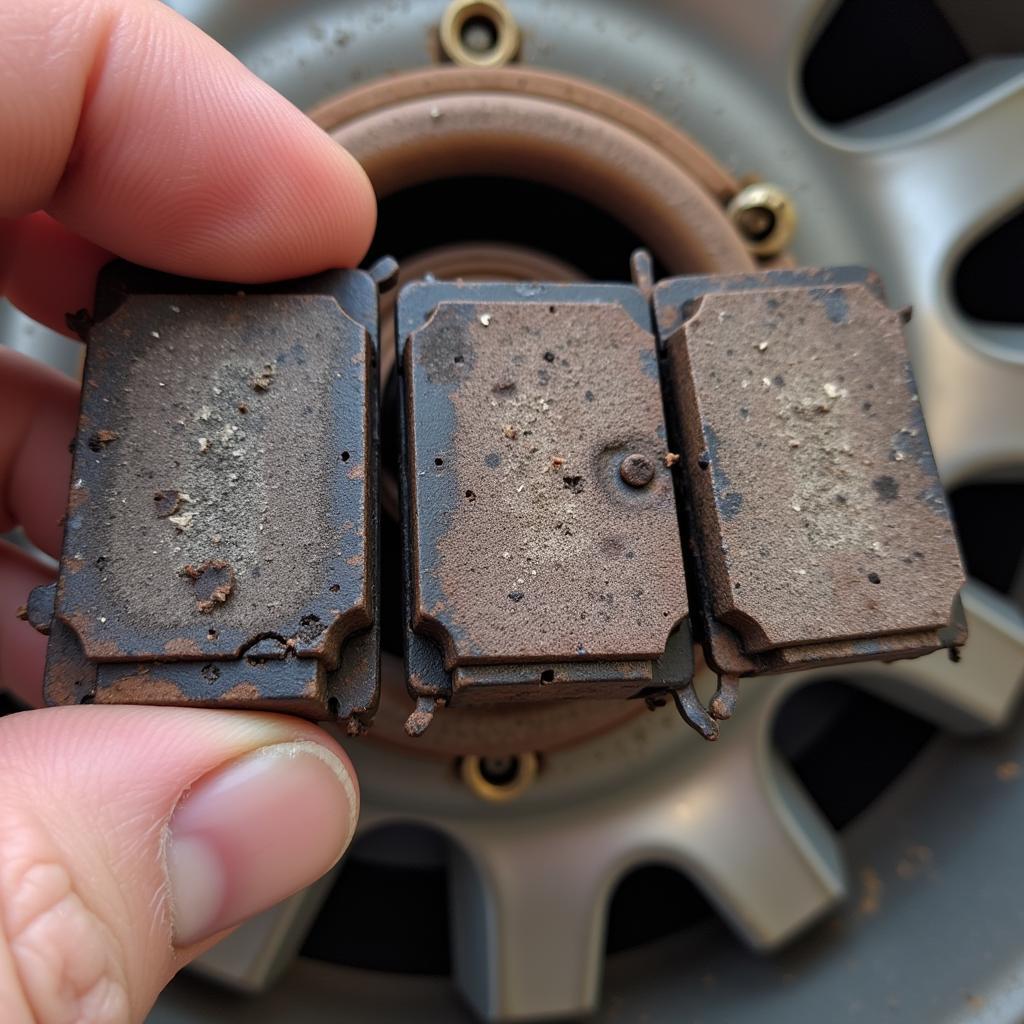The brake warning light on your Nissan Juke dashboard is a crucial safety feature designed to grab your attention when the car’s onboard computer detects a problem within the braking system. While it can be alarming to see this light illuminate, understanding the potential causes and knowing how to address them can save you time, money, and most importantly, keep you safe on the road.
This comprehensive guide will delve into the common reasons behind a Nissan Juke brake warning light, provide practical solutions, and offer expert advice to help you navigate this situation effectively.
Understanding Your Nissan Juke’s Brake Warning Light System
The brake warning light is part of your vehicle’s complex network of sensors and electronic control units (ECUs). When activated, it typically indicates one or more of these issues:
- Low Brake Fluid: The most common culprit, low brake fluid level, can significantly impact braking performance.
- Worn Brake Pads: As your brake pads wear down, the brake fluid level naturally decreases. Extremely worn pads can trigger the warning light.
- Faulty Brake Light Switch: This switch activates the brake lights when you press the pedal. A malfunction can disrupt the signal and illuminate the warning light.
- ABS Issue: Problems within the Anti-lock Braking System (ABS), such as a faulty sensor or control module, can also trigger the light.
- Parking Brake Engaged: While seemingly obvious, sometimes the parking brake may not be fully disengaged, activating the warning light.
Troubleshooting Your Nissan Juke Brake Warning Light
Before heading to a mechanic, you can perform a few simple checks to potentially identify the issue:
-
Check Brake Fluid Level: Locate the brake fluid reservoir under the hood (refer to your owner’s manual). If the fluid level is below the “MIN” mark, add the appropriate DOT brake fluid (check your owner’s manual for the correct type).
-
Inspect Brake Pads: Visually examine your brake pads through the wheel spokes. If the pad material is significantly thin (less than ¼ inch), it’s time for a replacement.
-
Test Brake Lights: Have someone observe the brake lights while you press the pedal. If they are not working, the brake light switch may be faulty.
 Checking Brake Fluid Level in a Nissan Juke
Checking Brake Fluid Level in a Nissan Juke
“Remember, if you’re uncomfortable with any of these checks or suspect a more complex issue, it’s always best to consult a qualified mechanic.” – John Miller, Certified Automotive Technician
When to Seek Professional Help
While some causes are easily addressed, others require professional attention. Consult a certified mechanic if:
- The warning light remains illuminated after adding brake fluid and checking the brake pads.
- You notice a soft or spongy brake pedal feel.
- Your car pulls to one side when braking.
- You hear unusual grinding or squealing noises while braking.
These symptoms often indicate a more serious problem, such as a brake line leak, master cylinder failure, or ABS malfunction, which require immediate professional attention.
Remote Diagnostics: The Future of Car Repair
In today’s digitally connected world, remote diagnostics and software solutions are revolutionizing the automotive repair industry. For certain issues, remote diagnostics can pinpoint the problem, allowing technicians to:
- Identify the root cause of the warning light remotely.
- Program and install software updates wirelessly.
- Offer targeted solutions without requiring a physical visit to the shop.
 Remote Diagnostics for Nissan Juke
Remote Diagnostics for Nissan Juke
This technology not only saves time and money but also provides a convenient and efficient way to address certain automotive issues.
“Remote diagnostics are invaluable for addressing software-related glitches, which are increasingly common in modern vehicles like the Nissan Juke.” – Sarah Thompson, Automotive Software Engineer
Preventing Future Brake Warning Light Issues
Adopting proactive maintenance habits can significantly reduce the likelihood of encountering brake warning light issues:
- Regular Brake Fluid Checks: Inspect your brake fluid level at least once a month and top it off as needed.
- Timely Brake Pad Replacements: Don’t wait for the warning light to illuminate before changing your brake pads. Replace them according to your manufacturer’s recommended service intervals.
- Routine Brake Inspections: Include a thorough brake system inspection during your regular car maintenance checks.
By following these preventive measures, you can ensure optimal braking performance and enjoy a safer driving experience.
FAQs
Q: Can I drive my Nissan Juke with the brake warning light on?
A: It’s strongly advised against driving with the brake warning light illuminated. It indicates a potential issue with your braking system, compromising your safety.
Q: How much does it cost to fix a Nissan Juke brake warning light issue?
A: The repair cost depends on the underlying cause, ranging from a simple brake fluid top-up to more complex repairs like replacing a brake caliper.
Q: How often should I change my Nissan Juke’s brake fluid?
A: Refer to your owner’s manual for specific recommendations. Generally, it’s advisable to change your brake fluid every 2-3 years or as recommended by your mechanic.
Q: Can a faulty ABS sensor trigger the brake warning light?
A: Yes, a malfunctioning ABS sensor can trigger the brake warning light. The ABS system is integrated with your overall braking system, and any issues within it can illuminate the warning light.
 Nissan Juke Brake Pads
Nissan Juke Brake Pads
Conclusion
Addressing a Nissan Juke brake warning light promptly is essential for maintaining your safety on the road. Understanding the potential causes, performing basic troubleshooting, and knowing when to seek professional help are crucial steps in resolving the issue effectively. Remember, regular maintenance and timely repairs are the key to a safe and worry-free driving experience.
